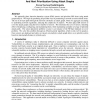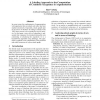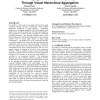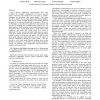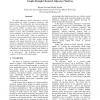105
click to vote
TDSC
2008
15 years 10 days ago
2008
The probabilistic packet marking (PPM) algorithm is a promising way to discover the Internet map or an attack graph that the attack packets traversed during a distributed denial-of...
97
Voted
JNSM
2008
15 years 12 days ago
2008
We optimally place intrusion detection system (IDS) sensors and prioritize IDS alerts using attack graph analysis. We begin by predicting all possible ways of penetrating a networ...
IJCAI
2007
15 years 1 months ago
2007
In recent years, the combinatorics of argumentation with arguments that can attack each other has been studied extensively. Especially, attack graphs (put in the focus of attentio...
100
Voted
CCS
2006
ACM
15 years 4 months ago
2006
ACM
In this paper, we position the correct way of using graphical models for enhancing cyber security analysis in enterprise networks. Graphical models can be powerful in representati...
101
click to vote
VIZSEC
2004
Springer
15 years 5 months ago
2004
Springer
We describe a framework for managing network attack graph complexity through interactive visualization, which includes hierarchical aggregation of graph elements. Aggregation coll...
105
click to vote
VIZSEC
2005
Springer
15 years 6 months ago
2005
Springer
While efficient graph-based representations have been developed for modeling combinations of low-level network attacks, relatively little attention has been paid to effective tech...
ACSAC
2005
IEEE
15 years 6 months ago
2005
IEEE
We apply adjacency matrix clustering to network attack graphs for attack correlation, prediction, and hypothesizing. We self-multiply the clustered adjacency matrices to show atta...
96
Voted
ACSAC
2006
IEEE
15 years 6 months ago
2006
IEEE
Attack graphs are a valuable tool to network defenders, illustrating paths an attacker can use to gain access to a targeted network. Defenders can then focus their efforts on patc...
123
click to vote
VIZSEC
2007
Springer
15 years 6 months ago
2007
Springer
Abstract Attack graphs for large enterprise networks improve security by revealing critical paths used by adversaries to capture network assets. Even with simplification, current a...
113
click to vote
CCS
2007
ACM
15 years 6 months ago
2007
ACM
In measuring the overall security of a network, a crucial issue is to correctly compose the measure of individual components. Incorrect compositions may lead to misleading results...

